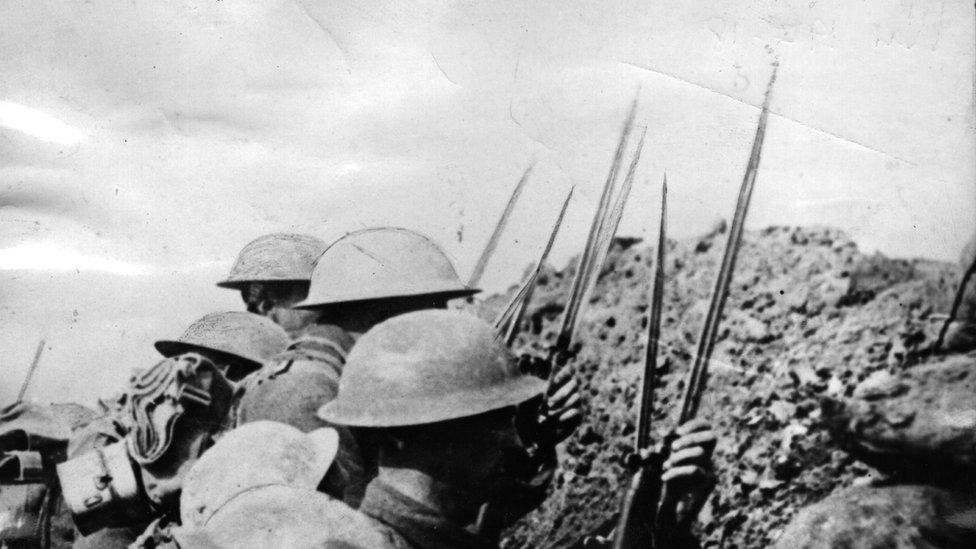World War One photographic exhibition at Belfast City Hall reflects on the Somme
- Published
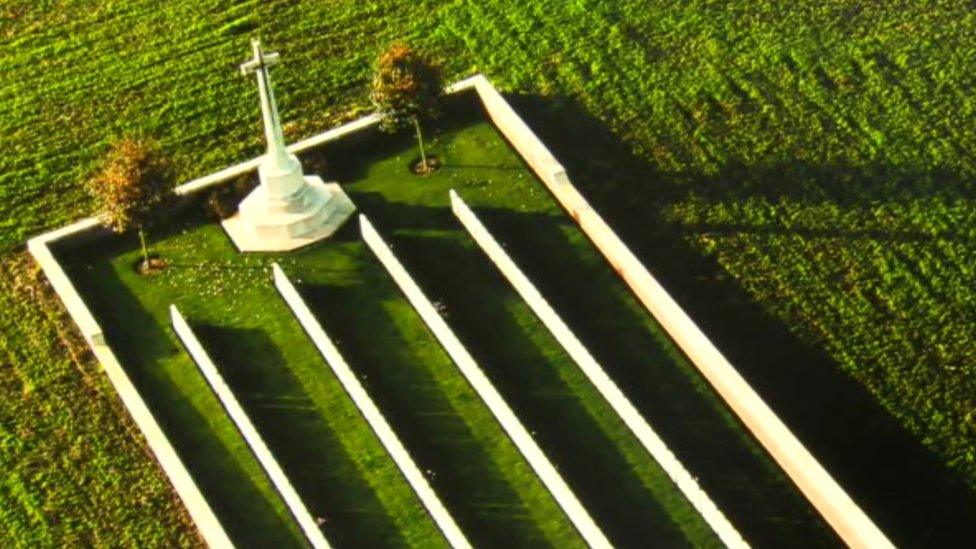
A cemetery at Grandcourt in northern France which is of particular significance to the 36th Ulster Division
Many people from Northern Ireland have travelled abroad to commemorate the centenary of the Battle of Somme this summer, but a new photographic exhibition in the grounds of Belfast City Hall allows them to reflect on the experiences of relatives from a vantage point closer to home.
Fields of Battle, Lands of Peace displays images by the photo-journalist Michael St Maur Sheil.
It looks at how the battlefields of World War One have changed over the past 100 years.
Michael said he had started the project in 2005 and explained what he wanted to achieve with the exhibition which has already been viewed in various locations including Paris, London and Istanbul.
"I am trying to show that what were places 100 years ago of horror and death, time and nature heals the wounds of war and actually they have now become landscapes of great peace and beauty," he said.
"The war is no longer a war of memory it has now become history, but the landscape still reflects that history.
"This project I started shooting in 2005 and the last picture was actually shot in December of last year so it has been a long process.
"Many of the pictures are shot early in the morning, because that is the time soldiers on both sides would be standing to with their weapons because you expected to be attacked at dawn."
Modern landscapes are portrayed alongside archive pictures in the exhibition.
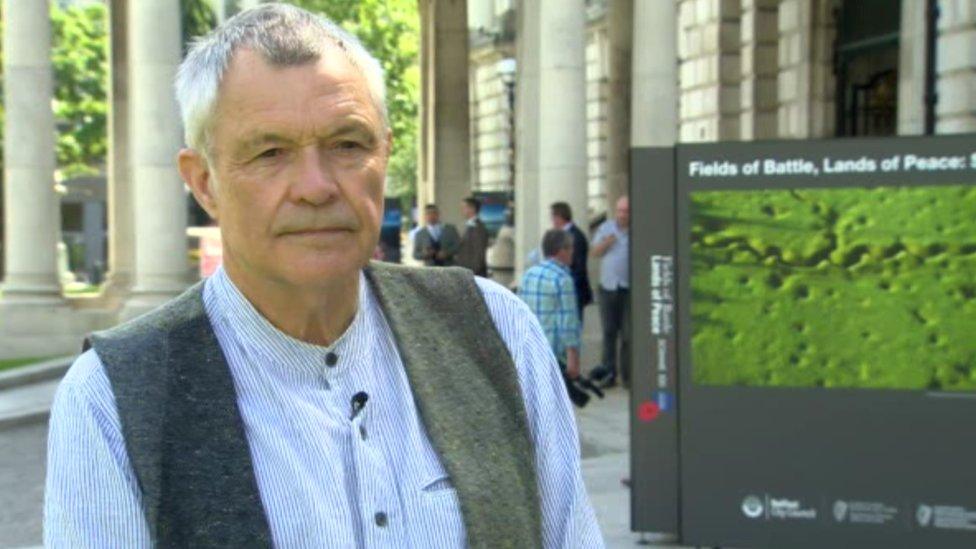
Michael St Maur Sheil said he began the project in 2005
The Somme experience is a particular feature and Michael draws on the contribution of soldiers from Ireland - north and south.
"I am delighted that it is here in Belfast, this exhibition after it is in Belfast will be going to Dublin and it is deliberately being done as part of reconciliation because for many years it has been impossible in the south to really pay honour to the soldiers that went off in 1914 for a very good reason, they thought they were proving themselves to be worthy of nationhood but when they came back in 1918 it was a different country," Michael added.
"With the Somme, July 1st is the day of the Ulster Division, but of course you have September 3 and September 9 when you have the Irish division at Guillemont and Ginchy and that again is reflected in this exhibition.
"If you like it is trying to show there is a shared experience, a common experience whichever persuasion you are - the Somme provides that."
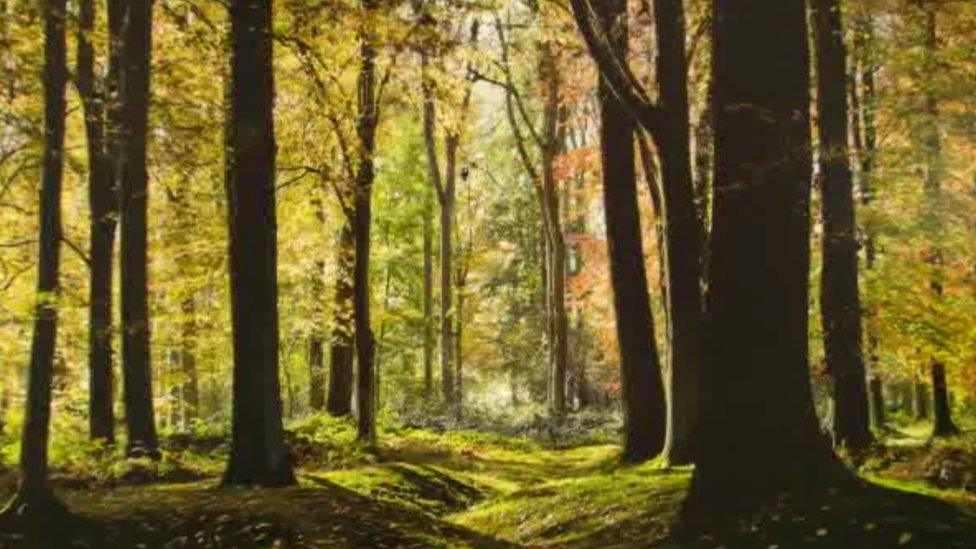
Dellville Wood which was the scene of fighting during the Battle of the Somme
Two photographs Michael picked out reflect the experiences of the 36th Ulster Division and the 16th Irish Division.
The first is a cemetery at Grandcourt in the north of France. The village was reached by part of the 36th Ulster Division on 1 July 1916.
"The Ulstermen had not only took their objectives on the day they went and got up against the German second line and they were held there," Michael said.
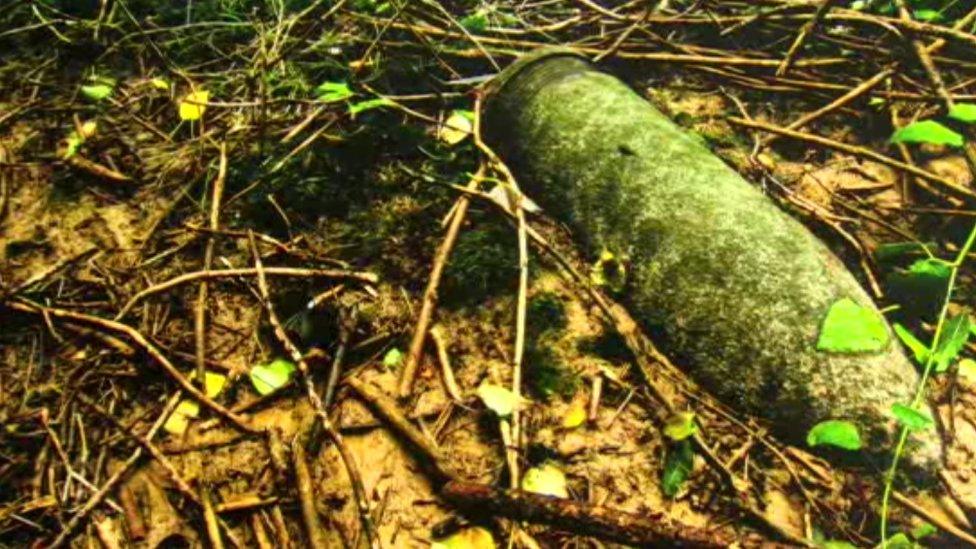
The exhibition has already been displayed in various locations
"They couldn't get reinforcements, they were running out of ammunition, they had no water and they basically thought they were surrounded and that is where they fought and died.
"This cemetery is for those men who were isolated in that lonely place, they died on July 1st. They were not buried until January and February of the next year when the ground was taken and that is why these are mass graves.
"For me this is one of the most significant cemeteries on the Somme battlefield."
World War One photographic exhibition at Belfast City Hall reflects on the Somme.
The second photograph shows a location in Ginchy in France which was the scene of one of the main offensives by Irish nationalist troops during the Battle of the Somme in September 1916.
"The 16th Irish division actually attacked Guillemont on 3 September and this is Ginchy where they attacked on 9 September," Michael said.
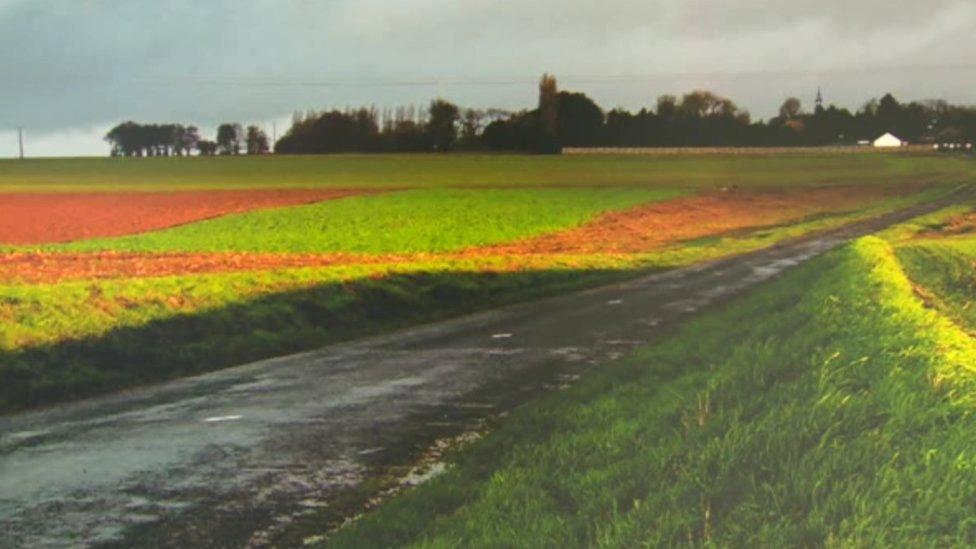
Ginchy was the scene of one of the main offensives by Irish nationalist troops during the Battle of the Somme in September 1916
"It is where a man called Tom Kettle was killed. Tom Kettle was a barrister, a professor in Dublin and a leading light of the Irish republican movement.
"In fact when war broke out he was actually in Belgium trying to buy weapons for the republican movement in Ireland.
"He is killed somewhere in this field and falls back into the arms of a man called Emmet Dalton who is an interesting character, because Emmet Dalton wins a military cross on the day. He is promoted to major in the British army and goes back to Dublin and joins the Irish Republican Army.
"We probably know him these days as the man who produced films like The Lion in Winter and The Spy Who Came in From The Cold."

Modern landscapes are portrayed alongside archive pictures in the exhibition
Fields of Battle, Lands of Peace will be in the grounds of Belfast City Hall until 31 August.
- Published18 July 2016
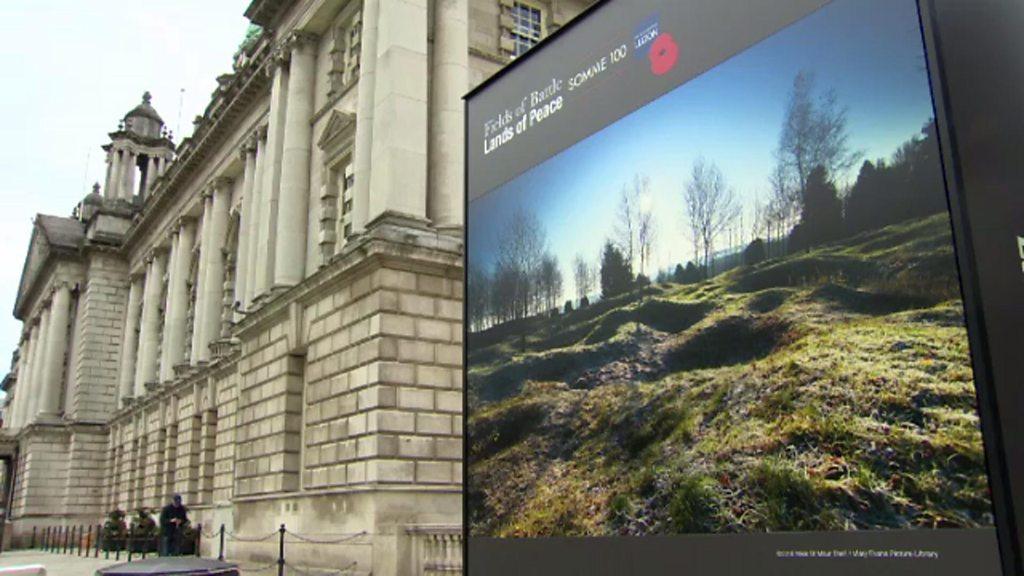
- Published1 July 2016
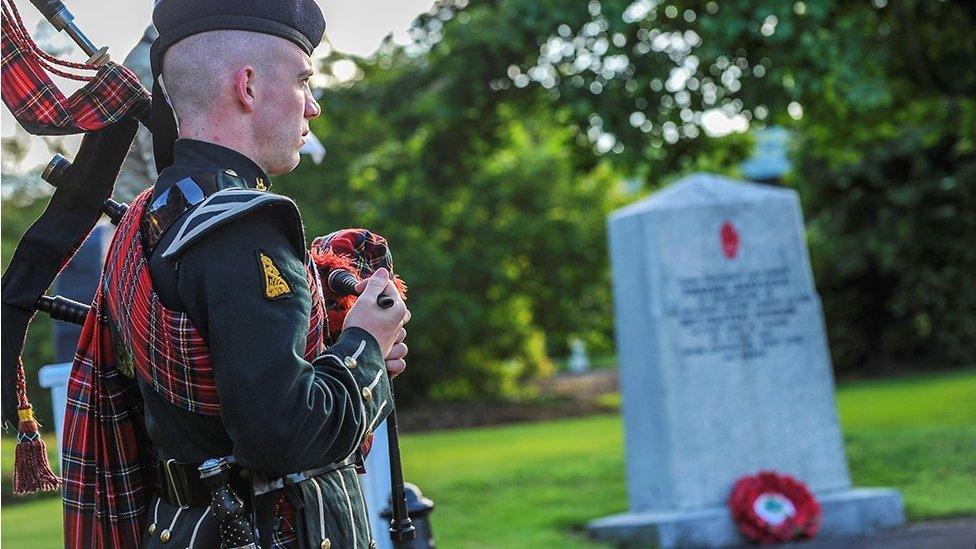
- Published30 June 2016

- Published29 June 2016
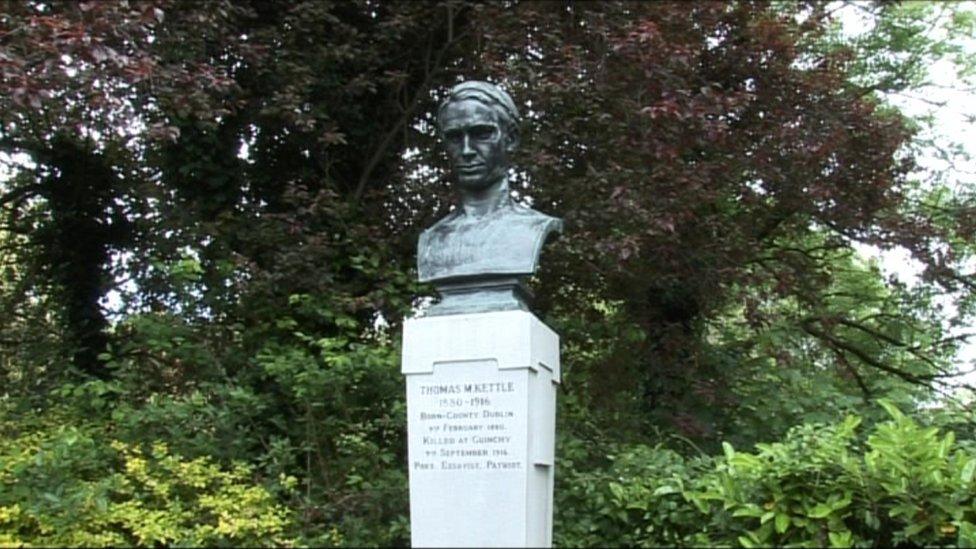
- Published16 June 2016
